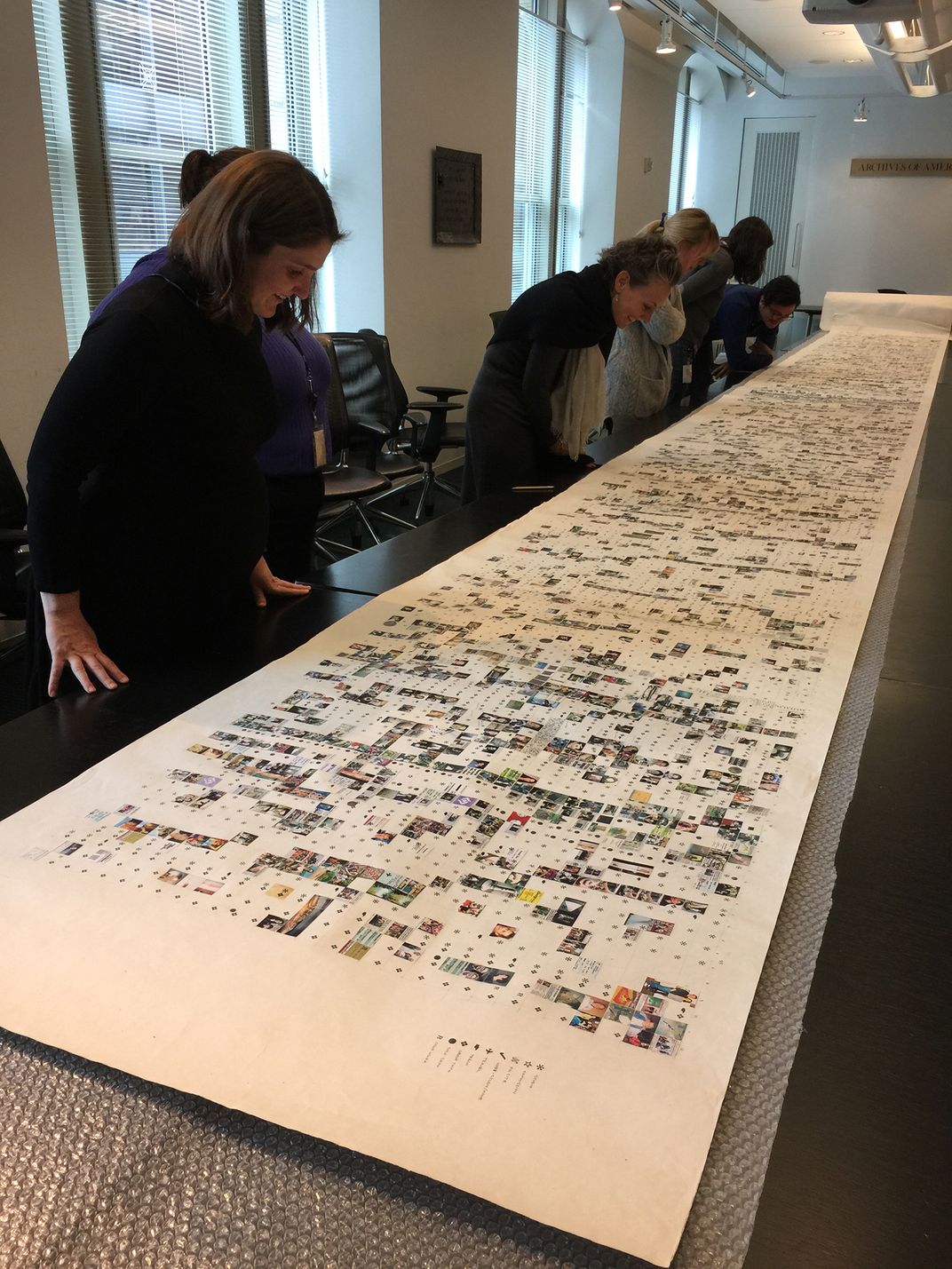Acquisitions: Loren Madsen Papers
/https://tf-cmsv2-smithsonianmag-media.s3.amazonaws.com/blogging/featured/AAA_madslore_65245_siv.jpg)
The papers of Loren Madsen (b. 1943), recently donated by the artist, include a large autobiographical scroll. Measuring thirty-six inches high and roughly thirty feet long, it is the largest object collected by the Archives. In the 1970s, Madsen made a name for himself as a sculptor by exhibiting cast concrete forms and rows of bricks and boards precariously supported by spindly sticks or tenuously suspended by wires or cables. In the 1980s, he received commissions for art in public places, a development that can be traced in the project files, sketchbooks, drawings, and documentary photographs that form the bulk of his papers. By the 1990s, Madsen turned away from explorations of gravity, friction, and countervailing forces, and began making what he terms “historical abstracts,” or “data art.” Project documents reveal his growing ambition to render statistical patterns in sculptural form, ranging from an umbrella-shaped embodiment of the trajectory of human population growth to a string of prayer beads scaled to match the frequency of terrorist-caused deaths in various parts of the world.

With his Long Scroll, Madsen turned to the patterns of his own life. The impetus for the project, begun in 1997, was the approaching end of the millennium and the widespread cultural anxiety surrounding Y2K. The scroll format was suggested as much by the Chinese scrolls Madsen had seen as a teenager at the Seattle Asian Art Museum as it was by the reams of ticker tape and computer paper commonly used for large data printouts. The scroll is gridded into approximately 11,000 one-inch squares set in vertical columns of thirty-one, each of which represents a month in the life of the artist. The continuous calendar begins at the upper left, with Madsen’s graduation from UCLA on June 19, 1970, and proceeds rightward, accounting for each day, until December 31, 1999. Some of the images Madsen affixed to his gridded scroll record personal moments, such as family get-togethers; others mark professional activities, like group exhibitions; still others capture media headlines, including entertainer Pee-wee Herman’s 1991 arrest for indecent exposure and the 1989 fatwa against writer Salman Rushdie. Madsen used nine different rubber stamps to indicate particular kinds of activity. Travel is noted with an airplane, teaching with a pointing hand, solo exhibitions with a dot, and so on (a legend explaining the symbols appears at the end of the scroll).
Researchers will enjoy charting the days of Madsen’s adult life in relation to contemporary historical events, while pegging their own personal milestones and memories to the colorful grid. Long Scroll invites comparison with other autobiographical forms, such as journals and family trees, while raising implicit questions about what is gained or lost when the scattered events of a life are sorted into data for narrative or other purposes. It offers an exciting opportunity to rethink the materials and methods with which we tell the stories of our lives
This essay was originally published in the fall 2017 issue (vol. 56, no. 2) of the Archives of American Art Journal.
